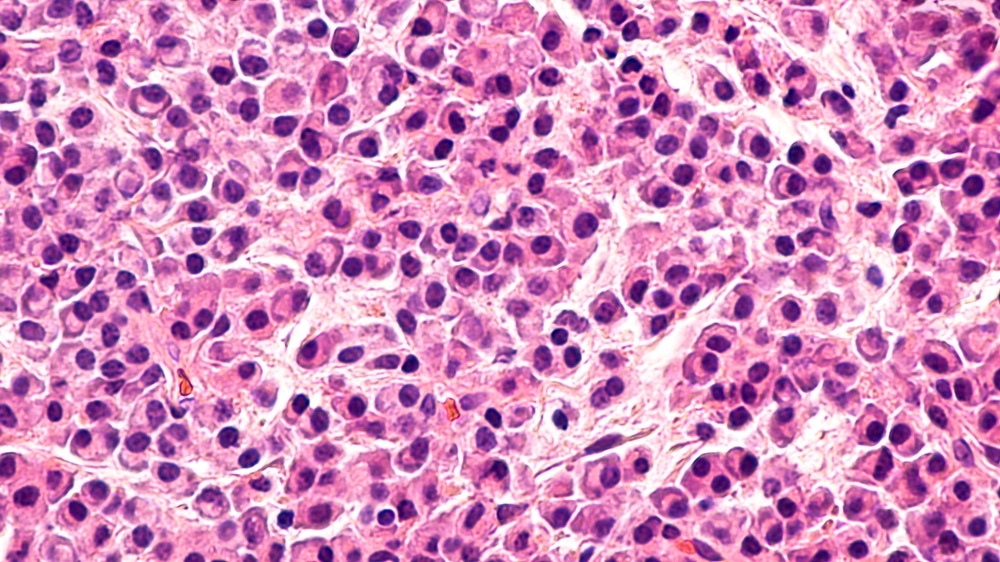Scientists have developed a microfluidics device that could potentially be used for the non-invasive detection or monitoring of disease progression in multiple myeloma.
 Image Credit: David A. Litman / Shutterstock.com
Image Credit: David A. Litman / Shutterstock.com
The device enabled the researchers to detect a certain type of cell circulating in the blood that has been correlated with shorter survival times. Existing methods have not always been able to detect low levels of these cells in the blood of patients.
About multiple myeloma
Multiple myeloma is a type of blood cancer that forms in white blood cells called plasma cells. These cells usually fight infection in healthy people by producing antibodies that target pathogens.
The cancer forms in the bone marrow, the same place that red blood cells form. The accumulation of malignant plasma cells in the bone marrow eventually overwhelms the production of healthy blood cells. Rather than these malignant cells producing beneficial antibodies, they make abnormal proteins that cause a range of health complications.
The condition is referred to as multiple myeloma because it can affect various parts of the body, including the skull, pelvis, ribs, and spine. In the early stages, there may be no symptoms, but as the disease progresses, it eventually causes painful and weak bones, kidney problems, fatigue, nausea, weight loss, and repeated infection.
According to the most recent estimates from the American Cancer Society, almost 27,000 new cases of multiple myeloma are diagnosed every year, and more than 11,000 patients die.
Certain malignant plasma cells move from the bone marrow into the bloodstream
Studies have recently shown that certain malignant plasma cells leave the bone marrow and move into the bloodstream. The presence of these cells, called circulating clonal plasma cells (cCPCs), in the bloodstream, has previously been correlated with shorter survival times among patients.
Until now, these cCPCs have been difficult to detect with existing methods when they are present at low levels.
New device can detect and filter the cells from small blood samples
As recently reported in the journal Microfluidics, researchers at the American Institute of Physics have developed a new device that can detect and filter cCPCs from small blood samples. The filtering device is able to isolate malignant plasma cells from healthy ones based on the principals of microfluidics. The team designed tiny pillars in the device's flow channel in such a way that they captured the malignant cells whilst enabling healthy blood cells through.
The team developed the device using a computational model that enabled them to compare pillars of different shapes and sizes. This revealed that diamond-shaped pillars had the lowest resistance to flow and that making those pillars longer and more pointed improved their filtering action.
Red blood cells are the smallest of the blood plasma cells, ranging from 6 to 8 microns in diameter. White blood cells are larger and range from 7 to 30 microns in diameter. While malignant cCPCs are larger still, with diameters ranging from 30 to 50 microns, the smallest cCPCs are a similar size to the largest white blood cells.
However, white blood cells can change shape and squeeze between the pillars, whereas cCPCs are stiffer, cannot change shape, and therefore become stuck in the filter.
The researchers tested the filtering device using cultured cancer cells and blood samples taken from multiple myeloma patients. Those experiments showed that the number of cCPCs captured from patients who had active disease was much larger than the amount captured from patients who were in remission and from healthy people.
This device shows great potential as a non-invasive method for either early detection or monitoring of MM [multiple myeloma] disease progression."
Lidan You, study author
Source:
Tiny filters help detect cancerous blood cells. Eurekalert. Available at: https://www.eurekalert.org/emb_releases/2019-11/aiop-tfh111219.php